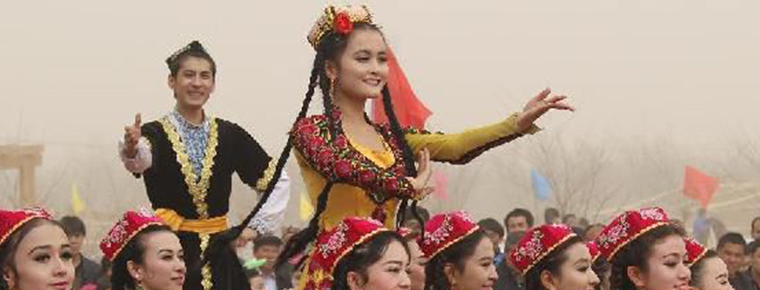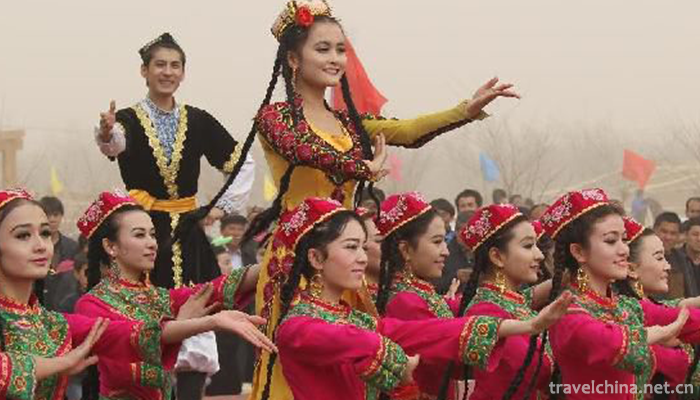2019-08-03

- By ChinaWiki.net
- Chinese Edition
- 2019-06-08
Nuuziz Festival
The word "Nuruzi" comes from the ancient Iranian language and means "spring rainy day". On March 21 of each year, like the Spring Equinox, it means the arrival of spring. Uygur, Tajik, Tatar, Kazakh and Uzbek minorities celebrate Noruzi Festival in various forms such as singing, dancing and acrobatics every year.
On May 23, 2011, the "Noruzi Festival" declared by Tacheng District of Xinjiang Uygur Autonomous Region was listed in the third batch of national intangible cultural heritage list with the approval of the State Council.
Origin of Festivals
Nozuz Festival originated in Central Asia and has a history of at least three thousand years. People who used to live nomadic and semi-nomadic life will celebrate the beginning of a new life with this traditional festival when the ice and snow melt, the grass and trees turn green, and livestock give birth to their offspring. On this day, people will hold various celebrations to wish them peace and happiness, prosperity and plentiful harvest in the new year.
The ceremony of "Noruze Festival" begins after the dawn of the festival. On the day of the festival, the parents of each family got up first, burned a pile of pine and cypress branches in the middle of the house, and turned the smoking branches around each person's head, wishing them peace and happiness. Then, parents take smoking pine branches to the entrance of the livestock pen, let the herd pass through the smoke, pray that the livestock will be fat and strong, and breed quickly.
According to tradition, the most important thing on the day of Noruze Festival is to cook "Noruze rice". People put nine kinds of grains, nine kinds of vegetables and various spices into a big pot in the open air to boil thick porridge. "Noruzi rice" means not only remembering bitterness and sweetness, but also wishing five grains a prosperous life and six animals a prosperous life. After Noruze Festival, the busy spring farming began.
Festival activities
There will also be grand activities around Xinjiang to welcome the arrival of spring. Kirgiz people dressed in festival costumes will play the Kumzi (three-stringed piano) and dance traditional dances imitating the flying movements of falcons. There are also many Kirgiz traditional sports games, such as Srichenchek (Kirgiz swing game), Upayi (sheep abduction game), Bitihali (poker game), Bishtash (five stones game) and other ethnic-specific programs.
Inheritance and Protection
On May 18, 2010, the Ministry of Culture of China announced the third batch of national intangible cultural heritage list of recommended projects (new entries). The "Noruzi Festival" declared by Tacheng District of Xinjiang Uygur Autonomous Region was selected as the intangible cultural heritage in the category of folk items.

Ask a Question
Your email address will not be published.


0 Questions